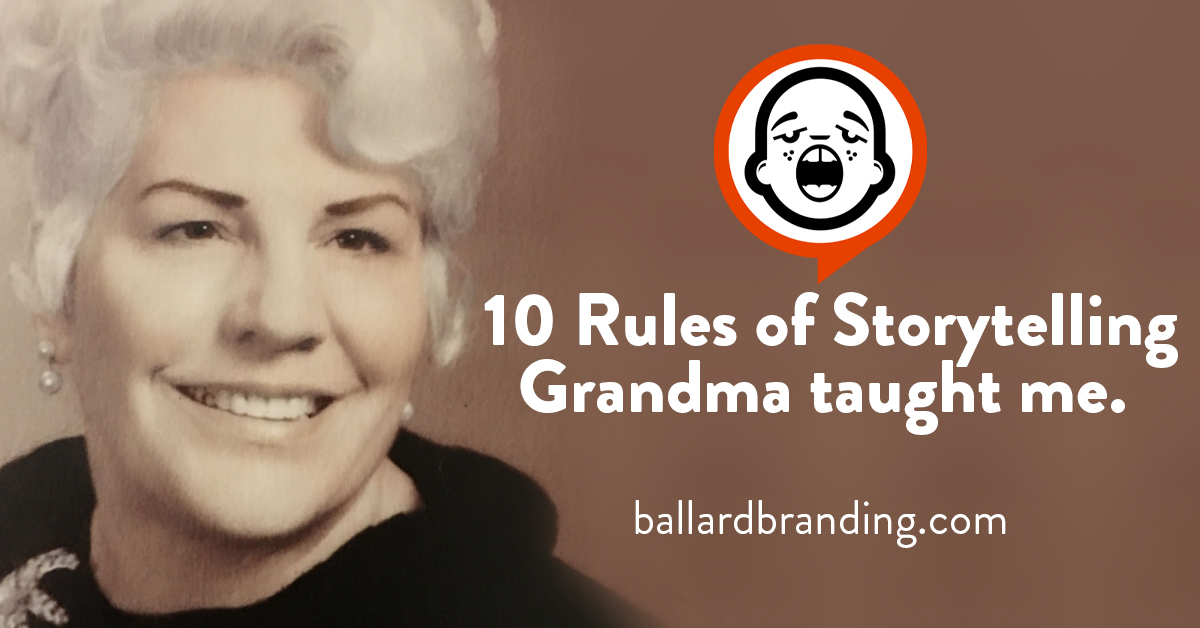As a child, I have fond memories of sitting on my Grandma Roxy’s lap, listening to her tell story after story. Although I can’t recall every single tale she told me, I vividly remember the way I felt in her presence. Her love and warmth radiated through each and every word she spoke, and it’s clear to me now that she was a master storyteller.
Stories have the power to transport us to another world, evoke emotions, and communicate messages in a way that can’t be achieved through any other means. And yet, despite their immense value, many businesses ignore the importance of storytelling in their marketing efforts.
The truth is, every person working in branding needs to develop their storytelling skills, and every brand owner must become a master storyteller. In today’s world, where customers are constantly bombarded with marketing messages, the power of a well-crafted brand story can’t be underestimated.
When customers engage with your brand story, they are much more likely to share it with their own networks, spreading your message far and wide. Here are 10 guiding principles to help you tell your brand’s story in a way that connects with your audience:
-
Know your audience: Before you begin crafting your brand story, you must have a clear understanding of who you’re speaking to. Who are your target customers? What are their interests, values, and pain points? What channels will you use to promote your story? By understanding your audience, you can tailor your message to resonate with them more effectively.
-
Make them care: To keep your audience engaged, you must make your brand story relevant to them. Why should they be interested in what you have to say? How is your story going to make a difference in their lives? If you can’t answer these questions, your audience won’t be motivated to pay attention.
-
Create the environment: A good story has the power to transport the reader to another place and time. By setting the scene and engaging the reader’s senses, you can create an immersive experience that draws them in. Use descriptions of sights, sounds, and emotions to create a vivid picture in the reader’s mind.
-
Be creative: A great brand story doesn’t have to follow a strict formula. You can choose to jump straight into the action, build suspense slowly, or use humor to keep your audience engaged. Whatever approach you take, be sure to keep your story simple, relevant, and engaging.
-
Know what you want: Every brand story should have a clear purpose and objective. What message do you want to communicate? What action do you want your audience to take after hearing your story? Having a clear goal in mind will help you focus your efforts and craft a story that achieves your desired outcome.
-
Engage the audience: One of the most powerful aspects of storytelling is its ability to create a connection between the teller and the listener. To engage your audience, make them feel like they are a part of your story. Ask questions, invite them to participate, and put them at the center of the action. By doing so, you can create a personal connection that makes your brand story feel real and relatable.
-
Be passionate: Your brand story should be a reflection of your passion and values. If you’re passionate about what you do, it will show in your storytelling, and your audience will feel that energy. By connecting with your audience on an emotional level, you can create a deeper bond that lasts long after they’ve finished reading your story.
-
Use powerful visuals: A picture is worth a thousand words, and the right visuals can help you tell your brand story in a way that words alone





0 Comments